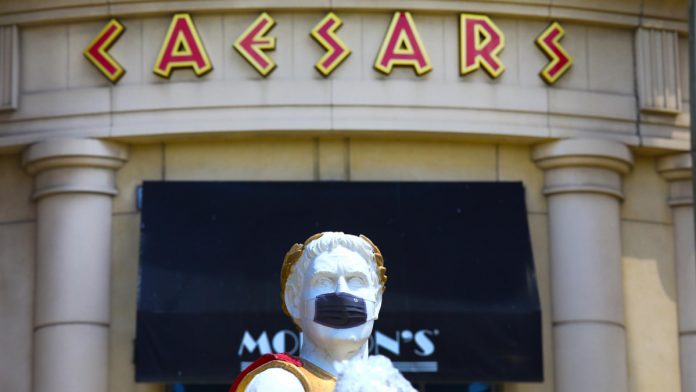Caesars has stressed that it fully expects to become EBITDA positive across its digital division by the 2023 NFL season, as the cost of new market launches causes a Q1 2022 group-wide net loss of $680m (2021: $423m).
Despite emphasising a retail bounce back, with 18 properties in the group’s estate recording a highest first quarter EBITDA, Tom Reeg, CEO of Caesars, noted an expectation that “the first quarter is our peak EBITDA loss” for digital.
Of that net loss, $576m can be attributed to digital, with Caesars ‘managed and branded’ and ‘corporate and other’ subsegments recorded net losses of $211m (2020: $15m) and $185m (2021: $428m). Las Vegas and regional US properties saw net income increase to $168m (2021: -$67m) and $124m (2021: $65m), respectively.
Group-wide revenue for the group increased 20.9 per cent to $2.29bn (2021: $1.79bn), due to upticks of 83.9 per cent and 13.5 per cent to $914m (2021: $497m) and $1.36bn (2021; $1.19bn) across the Las Vegas and regional markets. Caesars Digital dropped to a loss of $53m from a profit of $39m one year earlier.
Adjusted EBITDA declined 43.2m per cent overall to $296m (2021: $535m), as increases of 146.9 per cent and 18.6m per cent to $400m (2021: $162m) and $459m (2020: 393m) in the Las Vegas and regional divisions failed to offset a $554m (2021: $2m) loss incurred by digital.
“Of the … EBITDA loss in the quarter, a little over $400m is attributable to the launches in New York and Louisiana, with New York the lion’s share of that,” Reeg commented on Caesars’ earnings call.
“As discussed, we got to our handle share goals far earlier than we anticipated, and we did cut back all of our mass media spend.
“So we cut about a little over a quarter of a billion dollars of expected spend from when we started cutting in February through the end of this year, we’ve seen no degradation in handle share, other than our planned retrenchment in New York”.
Adding: “We were more aggressive than we needed to be out of the box in New York and got 37 per cent, 40 per cent, 40 plus percent share.
“You see us kind of in that 15 per cent to 20 per cent share since we’ve retrenched. That’s the only material movement in share even though we’ve cut over a quarter of a billion dollars from marketing.”
On the road that lies ahead, Reeg anticipates Ohio that represents “the only state where you really have to invest in this year” across the US’ digital ecosystem, after stating that “I’m sceptical Maryland launches mobile in 22”.
Looking further north, he commented: “I’d say we have Ontario is a unique animal given the grey market that existed there before and the restrictions on what you’re able to do.
“So, we’re building our capabilities in Ontario, but you shouldn’t expect to see us throw a lot of money in Ontario. We expect to be a player. We expect the market to grow steadily, but that’s not going to be a big needle mover one way or another for us.”
Through the quarter Caesars also reported that its operating expenses increased 46 per cent to $2.3bn (2021: $1.57bn), driven by a 81.2 per cent increase to $1.06bn (2021: $587m) in casino and pari-mutuel commission expenses.
Following the aforementioned launch of sports betting and igaming in Ontario on April 4, Caesars now offers sports betting in a combination of 24 domestic states and North American jurisdictions, 17 of which offer mobile wagering.
Anthony Carano, President and Chief Operating Officer of Caesars, commented: “We remain focused on growing our digital business during Q1 through customer acquisition, especially in new markets, including New York and Louisiana.
“While customer acquisition and handle exceeded our internal expectations, especially in New York and Louisiana, net revenues were negatively impacted by promotional investment to support the new market launches.”











